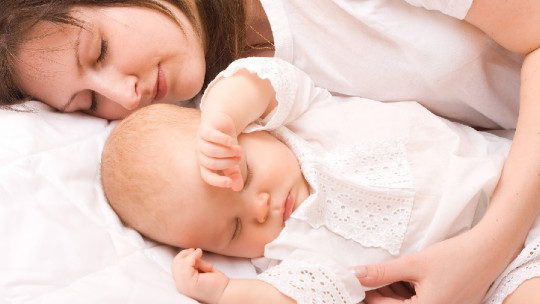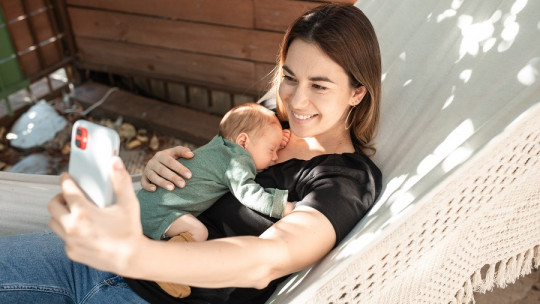
Throughout the history of the human race, it has been common for members of the same family, parents and children, slept in the same bed Either for reasons of space, economics or mere habit.
This practice known as co-sleeping has developed great fame in recent years and is strongly advocated by those who advocate attachment-based parenting. However, there is also great controversy around this practice. Below we describe what it consists of, its pros and cons.
What is co-sleeping or family bed?
The practice of co-sleeping or family bed refers to the custom in which babies or small children sleep with their parents. This very normalized practice in most parts of the world has become another means to develop emotional and attachment dynamics within the family
Although in many occasions or contexts, co-sleeping is only carried out to ensure that the child sleeps warm and well during the night, it has been recently when those who follow attachment parenting styles have provided This practice benefits physical and mental health, as well as the happiness of parents and children.
There are several ways to practice co-sleeping at home from spending the entire family nights in the same bed, to using continuous beds or cribs or using cribs specially designed to be attached to the parents’ bed.
Whatever the option chosen, the decision to practice co-sleeping must be made by consensus between the parents and carried out in a responsible manner, guaranteeing the safety of the baby.
The best option is for those parents who decide to start implementing co-sleeping Go to a specialist doctor or a midwife to advise you on how to do it in the best way.
However, a series of points to take into account when practicing co-sleeping are described below.
Tips to practice it
There are a series of guidelines, advice and precautions developed by different organizations such as the World Health Organization (WHO) that parents should take into account before starting co-sleeping. These guidelines are as follows.
The baby should be lying face up. Use a flat, firm mattress. The use of water mattresses, sofas or small beds is totally contraindicated. Parents should ensure that there is no chance of the baby falling out of bed.
In what situations is it useful?
Regardless of the advantages of co-sleeping, which we will describe later, there are a couple of situations in which the practice of co-sleeping is especially useful and parents can take into account if they want to do this practice occasionally.
One of the situations in which “co-sleeping”, or having the baby or child sleep next to their parents, is when he is especially nervous or restless for any reason and it is practically impossible for him to sleep alone.
Likewise, if it is the parents who feel tired or exhausted and have the need to carry out nighttime care for the baby, with as little effort as possible, as may be the case with breastfeeding, co-sleeping is an interesting practice to try.
What advantages does co-sleeping have?
There are various studies that have been carried out on the practice of co-sleeping, which have reached a large number of conclusions and have established a series of advantages that this practice has in relation to the health and well-being of the baby.
One of the most important psychological advantages that this practice or custom has is that increases the feeling of protection that the baby has, as well as enhances and reinforces the emotional bond established between the parents and the child.
The list of advantages offered by co-sleeping can include:
Controversies around this way of sleeping
As with practically all trends or theories regarding parenting or childcare, there are a series of controversies and criticisms about co-sleeping.
The detractors of this practice rely on a series of disadvantages or dangers that they relate to the fact that fathers or mothers and children share a bed These drawbacks are:
- Risk of suffocation for the baby.
- Do not perform it on premature babies or with weights less than 2.5 kg.
- The state of alertness of the parents that can appear when sleeping with the baby can lead to them sleeping worse or not resting.
- The lack of privacy It could harm the relationship.
- Some studies indicate that practicing co-sleeping after the baby turns one year old can create dependency on this and develop a less mature personality.
- In contradiction to studies that claim that co-sleeping reduces the risk of sudden death, there are a number of medical authorities who insist that co-sleeping could increase it. However, if we take as an example countries like Japan, which has the lowest rate of SIDS, the practice of co-sleeping is recommended there.








